In today's summary:
- Ukrainian forces conduct reconnaissance in combat in the Zaporozhye direction;
- Yevgeny Prigozhin declares that the counter-offensive of the Armed Forces of Ukraine has begun;
- Some foreign analysts are inclined to the version that the drone strike on the Kremlin is staged;
- Russian sources give a more plausible explanation for the failure of the air defense in the Kremlin attack – the factor of the "May holidays";
- Over the past four days, six tank farms and refineries have been attacked in Russia;
- Kyiv has been hit by Russian kamikaze drones for the third time in the last four days;
- The results of the Russian shelling of Kherson and the region – 23 people were killed, 46 were injured;
- Details of the new US military aid package for Ukraine.
The situation at the front
Several pro-Russian Telegram channels reported an attempt at a limited advance of the Armed Forces of Ukraine south of Orekhov in the Zaporozhye direction, calling it "reconnaissance in combat."
The channel "Military Informant" with reference to "sources from the field" writes :
“Reconnaissance in combat of the Armed Forces of Ukraine in the Orekhovsky direction failed. The enemy suffered losses in manpower and equipment, and was also forced to retreat to their original positions. However, the purpose of such attacks is not initially to capture the territory, so the enemy tries to open the fire system in defensive positions, identify artillery and find weak spots for delivering the main blow.
"Military Informant" also publishes a video of the battle with the participation of military personnel of the 291st regiment and the 291st artillery brigade of the RF Armed Forces.
In Bakhmut, the situation remains unchanged. A remarkable video from the city, covered in smoke from fires, is circulating on social networks.
A new video of the movement along the “road of life” to Bakhmut through the village of Ivanovskoye has also appeared . The frame captures Ukrainian equipment disabled by Russian shelling and ATGM strikes: the Dutch YPR-765 armored personnel carrier, the German ATF Dingo armored car, the BMP-1 and the T-64BV tank of the 2017 model.
Meanwhile, one of the founders of the Wagner PMC, Yevgeny Prigozhin, claims that the counteroffensive of the Armed Forces of Ukraine has already begun, and the Ukrainians allegedly have people and shells "in unlimited supply." The GRAY ZONE channel, close to PMC Wagner, adds that by May 1, "the enemy has completed the formation of an offensive strike group, as well as reserves." The post provides interesting (although not confirmed) data on the concentration of Ukrainian forces in certain sections of the contact line.
More than 50,000 personnel, about 300 tanks, 1,300 armored combat vehicles, 200 MLRS units, 500 artillery pieces and mortars, 300 units of swimming vehicles are allegedly concentrated in the Zaporozhye direction.
According to GRAY ZONE, 40 thousand people, about 90 tanks, 700 armored combat vehicles, 50 MLRS units, 105 artillery pieces and mortars, 150 units of swimming vehicles have been assembled in the Krivoy Rog direction, according to GRAY ZONE.
The authors of the channel describe as a possible element of the operational plan of the command of the Armed Forces of Ukraine a landing on the left bank of the Dnieper in order to create a bridgehead along the coastline of the Kakhovka reservoir.
Against this background, Z-channels write that water is being discharged into the Dnieper from Kiev and Kremenchug in order to flood the left bank of the Dnieper (especially in the Kherson region) in order to wash away mine-explosive barriers and clear the way for a possible landing operation. According to these data, the water level in the Kakhovka reservoir has risen to 17 meters – 1 meter above the norm. True, it is not clear whether this is due to heavy rains or indeed to a possible discharge of water.
Mutual shelling
Following yesterday's attack by the Kremlin with two drones, there is a discussion about what really happened and who is behind the incident.
As CIT notes , small aircraft-type drones are clearly visible in the video. Such a drone, the researchers believe, could not be launched from afar. In addition, to launch this type of UAV, you need either a runway for acceleration or a catapult – a rather bulky structure, CIT analysts say. Given the large number of cameras in central Moscow, it is surprising that no video footage of drone flights outside the Kremlin area has yet been made.
The American Institute for the Study of War (ISW) leans towards the staged version. The arguments point to consistent efforts to build up air defense forces and assets in the Moscow region, making it unlikely that a drone will reach the most protected place in the center of the capital, and to an atypically quick and coordinated reaction of the Russian authorities. As ISW writes, a "false flag operation" may be intended to influence the mood of citizens.
For our part, we note that overcoming air defense systems with small and inconspicuous drones, even in Moscow, does not seem like an impossible task, and the reputational damage inflicted by the attack on the Kremlin is hardly justified by any short- or even medium-term internal political or military plans of the Russian leadership. Although there are indeed many questions about the attack itself, in addition, it still remains unclear who is behind its organization.
Telegram channel Baza presents a slightly more plausible version of events. According to channel sources, the drones that attacked the Kremlin were noticed in the suburbs, but did not react:
Regional departments and emergency services initially decided that people's reports about drones were another episode of hysteria with drones … However, when the UAVs flew over the Moscow Ring Road, it became clear that this was not a false call at all. The drones flew towards the city center. The security forces began to report the UAV to the top, "but due to the late time and the May holidays, there was no proper immediate reaction."
Press Secretary of the President of Russia Dmitry Peskov accused the United States of organizing the attack. Attempts by Kiev and Washington to “disown” involvement in the drone attack on the Kremlin are “ridiculous,” Peskov said, quoted by RBC. “We are well aware that the decision on such attacks is made not in Kyiv, but in Washington. Often, even goals are determined not by Kyiv, but by Washington. Not every time Kyiv is given the right to choose means. Washington should clearly understand that we know this,” he said.
The American administration promptly denied Peskov's allegations. A spokesman for the US Department of Defense, according to American journalists, said that this should not be considered a serious attack, since everyone knows that Putin spends little time in the Kremlin.
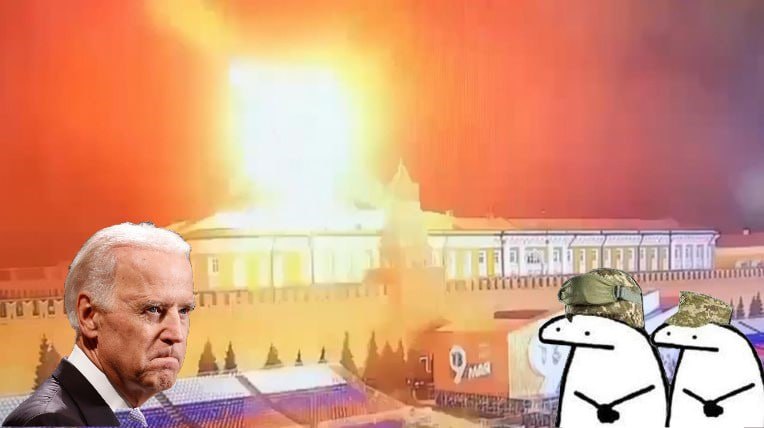
Representatives of Kiev continue to deny their involvement in the attack, including, according to CNN journalist Alex Marquardt, in private conversations with the White House.
After the drone attack in Moscow, they are allegedly going to jam the GPS signal within the Boulevard and Garden Rings and strengthen security measures directly in the Kremlin.
According to the Baza Telegram channel, police officers in Moscow were told that a change in GPS location would be activated during the preparations for the May 9 parade. Navigators may malfunction. At the same time, it is reported that problems with determining coordinates are already present throughout Moscow, and not just in the city center. The devices see not only GPS and GLONASS satellites, but also Galileo, Beidou and even the Japanese QZSS, but fail to catch a signal. Because of this, users cannot normally call a taxi, and drivers who do not know the city are lost. Food delivery is also disrupted, with many orders being cancelled.
By May 3, 39 regions of Russia introduced a ban on the use of drones.
On the night of May 4, drone strikes continued on fuel infrastructure facilities in southern Russia. Drones hit the Ilsky oil refinery in the Krasnodar Territory and the Novoshakhtinsky oil plant in the Rostov region.
According to ASTRA, there were three explosions at the Ilsky refinery, one fuel tank was completely destroyed, the second was partially burned down. There were no casualties.
Z-channels note that there are systemic problems in the field of security of infrastructure facilities in Russia. For example, the guards of the Ilsky refinery had anti-drone guns. The only problem is that the plant is lit at night, as provided for by the regulations, and the attackers could see it perfectly, but the guards could not see the drone at night.
At the Novoshakhtinsk plant, a drone crashed into the structures of an inter-workshop flyover. According to the governor of the Rostov region Vasily Golubev, the fire was extinguished by the plant's employees on their own, there were no casualties or damage, the damage was insignificant.
According to analyst Benjamin Pitte, in just the past four days, four oil refineries and two tank farms have been hit in Russia and Crimea.
Shelling and unmanned aircraft activity also continue in the regions of central Russia bordering Ukraine.
The governor of the Voronezh region, Alexander Gusev, wrote on his Telegram channel that an air defense system detected and destroyed a UAV in the sky over the region. According to him, there are no casualties and destruction on earth. According to ASTRA sources, at 5:40 a.m. the drone fell on the territory of military unit 45117 in Buturlinovka. The 47th Bomber Aviation Regiment was previously stationed there, armed with Su-34 front-line bombers.
In the Bryansk region, during the shelling of the village of Polevye Novoselki, one personwas injured , several households were damaged, and power supply was interrupted.
The third FAB-500 bomb was found in the Belgorod region. This time the bomb was found in the village of Golovchino, 10 km from the Ukrainian border. Its fall took place on April 25, a few days after the emergency in Belgorod, when, due to the depletion of ammunition from the Su-34, two FAB-500s fell on the city, and one of them exploded.
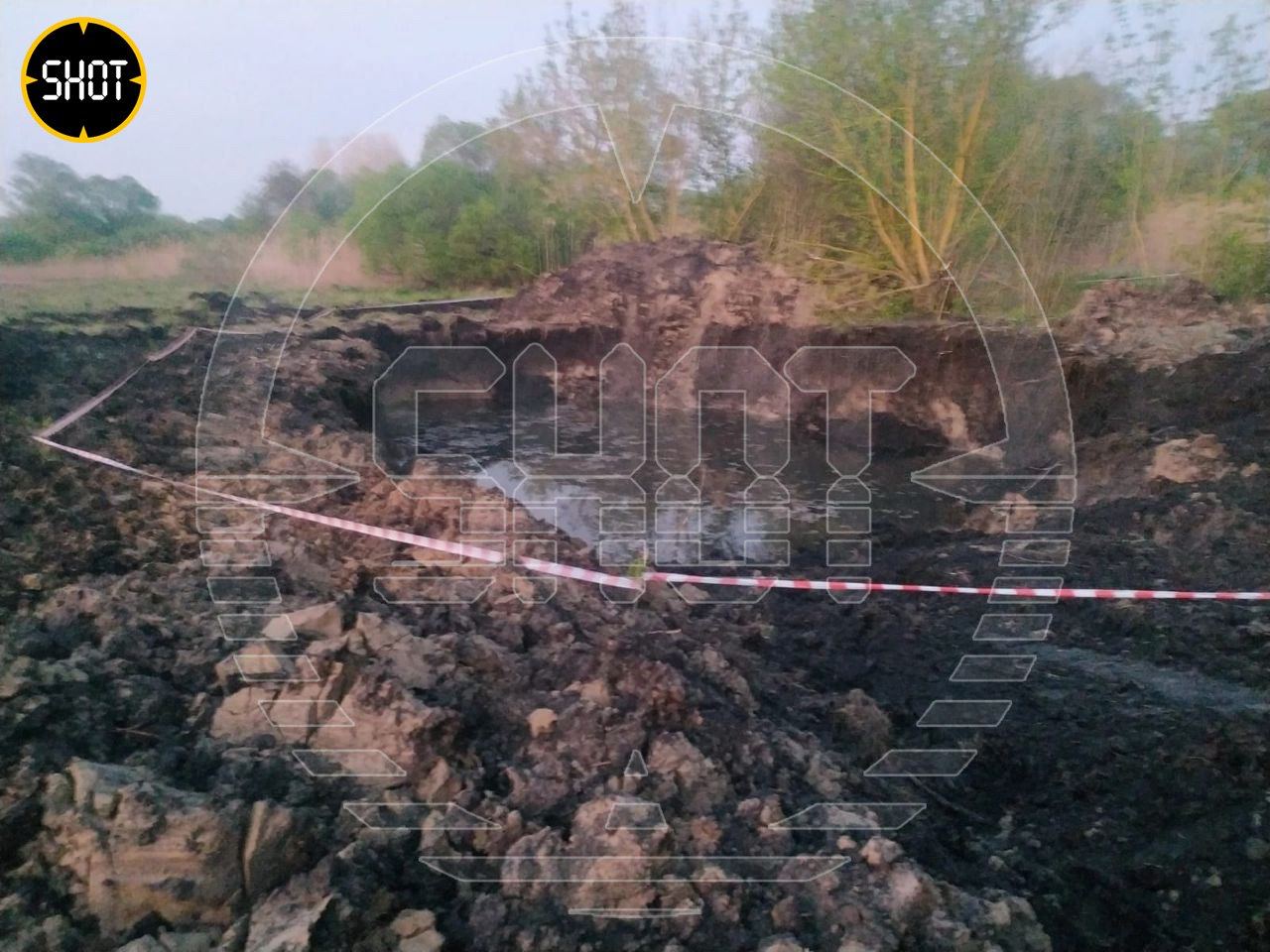
Also in the Belgorod region, a Shark UAV (used for reconnaissance and target designation) was shot down, flying 5.5 km after crossing the border.
According to Z-channels, the drone was hit by a ZU-23-2 anti-aircraft artillery mount. And as a result of a mortar attack near the village of Karabanovo, a conscript was wounded by shrapnel.
For the second day in a row, Russian kamikaze drones have been making massive raids on Ukraine. The command of the Air Force of the Armed Forces of Ukraine reported on the destruction of 18 of the launched 24 UAVs of the Shahed family. The day before, it was reported about the raid of 26 "Shaheds", of which 21 were shot down.

The pro-Russian Telegram channel “Turned in Z War” for the first time published a video of the launch of kamikaze drones of the Shahed family.
The operational command "South" reported an attack by 15 "Shaheds" in Odessa. According to official information, 12 of them were shot down, the rest hit the dormitories of "one of the educational institutions." According to unconfirmed reports, we are talking about the Military Academy.
It is noteworthy that on the case of the drones that attacked Odessa, judging by the photographs posted by the Ukrainian side, the inscriptions “For Moscow” and “For the Kremlin” are applied.
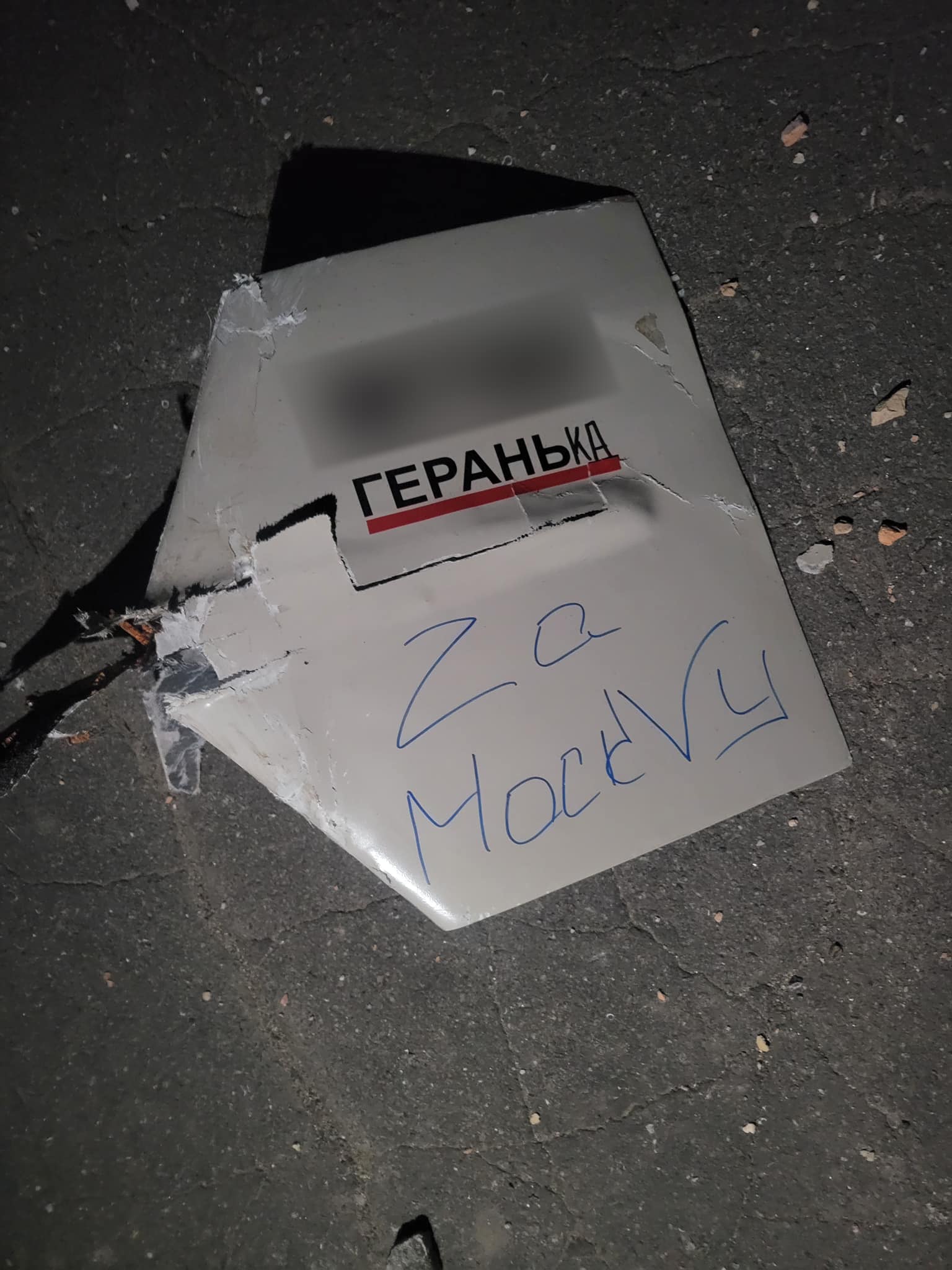
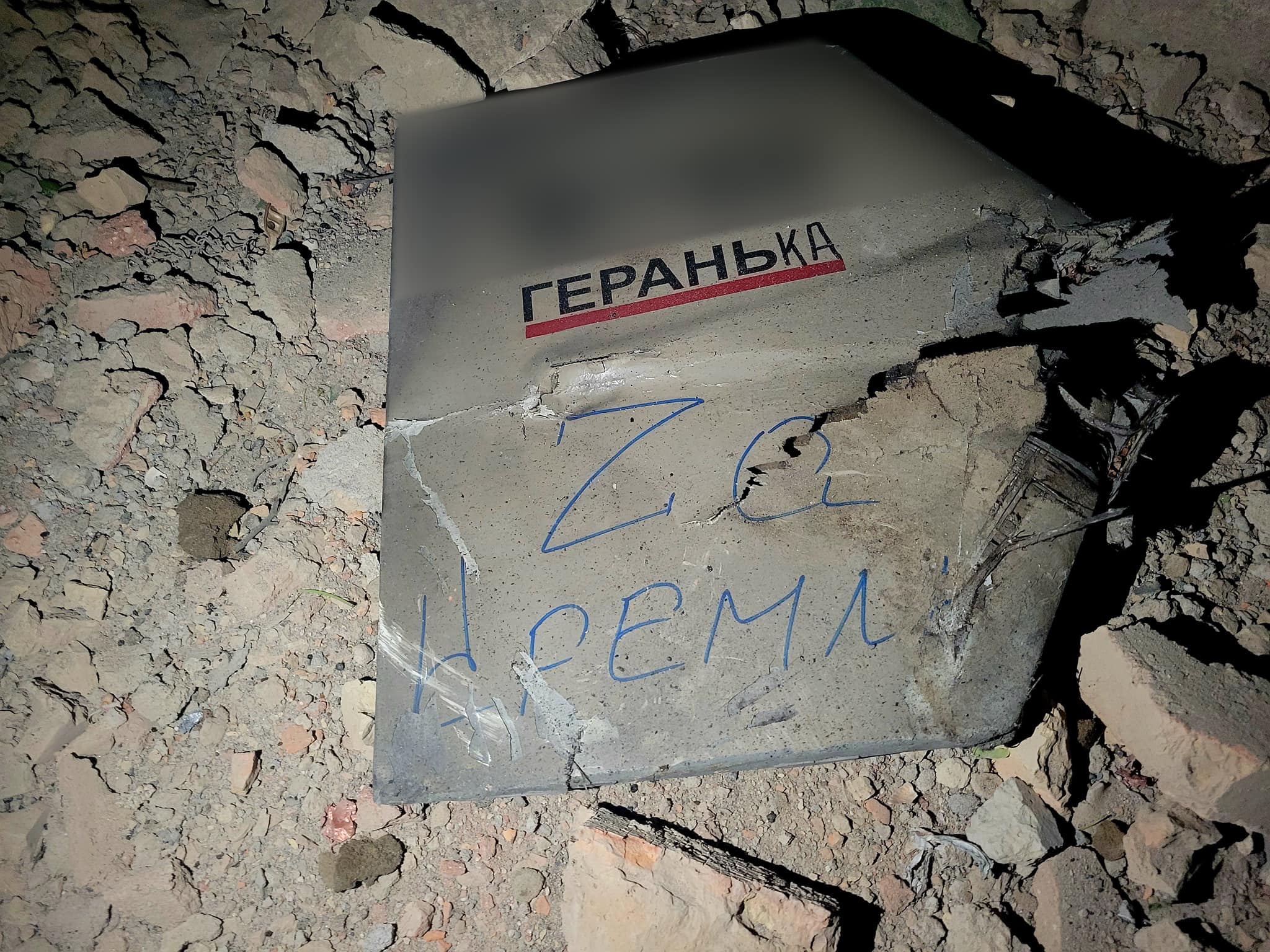
The Kiev city military administration reports that all kamikaze drones aimed at the capital were shot down. The fragments of the destroyed devices fell on residential buildings in several districts of the city, no one was injured. It should be noted that Kiev has been subjected to massive attacks for the third time in the last four days.
In Ukraine, the results of yesterday's shelling of Kherson and other settlements of the Kherson region from rocket artillery were summed up. According to the latest data, 23 people were killed, 46 people were injured. According to Ukrainian media, one of the blows fell on the only working hypermarket in the city. On the morning of May 4, people lined up at the Kherson bus station to evacuate.
Losses
Evgeny Prigozhin again spoke about the daily losses and the advancement of the Wagner PMC in Bakhmut. According to him, on the eve of the "Wagnerites" advanced to a distance of 230 meters, losing 116 people killed. Prigozhin again spoke about the "acute shell hunger."
It should be noted that recently an independent confirmation of Prigozhin’s accusations against the Russian “circumwar bureaucracy” has appeared: one of the Ukrainian infantrymen on the front line near Bakhmut told the journalists of the Hromadske Telebachennya project that when the Wagnerites were on their sector of the front, the enemy’s artillery worked less intensively, than later, when the mercenaries were replaced by regular troops.
Armaments and military equipment
The Pentagon has published details on a new package of military assistance to Ukraine. It included:
- additional missiles for MLRS HIMARS;
- 155 mm howitzers;
- 155 mm shells;
- 120, 81 and 60 mm mortar mines;
- ATGM TOW;
- RPG AT-4 and Carl Gustaf;
- aviation missiles Hydra-70;
- small arms and ammunition;
- demining equipment;
- trucks and trailers for transporting heavy equipment;
- testing and diagnostic equipment to support the maintenance and repair of vehicles;
- spare parts and other equipment.
The pro-Russian Telegram channel “Military Informant” draws attention to the supply of Hydra-70 missiles, suggesting that they will be used not only in strike aircraft, but also in APKWS installations that turn an unguided missile into a light, precision laser-guided munition. Also, the authors of the channel believe that 155-mm howitzers are supplied to replace the M777, destroyed by the Lancet kamikaze drones. According to the Oryx project, the confirmed losses of M777 howitzers are 50 pieces (that is, about a third of those delivered ), of which 31 guns were completely destroyed.
According to the US Department of Defense, since February 24, 2022, military assistance to Ukraine has reached $35.7 billion.
Photo and video materials with Leopard 2A6 tanks and M109A6 Paladin self-propelled artillery mounts received by the Armed Forces of Ukraine are being circulated on social networks. Recall that Russian Defense Minister Sergei Shoigu reported on the destruction of the Paladins by Russian forces a month ago, but then, apparently, it was about the M109 self-propelled guns of earlier modifications – the M109A6 produced in the 90s appeared in Ukraine only now.
Israeli missile early warning system launched in Kyiv. This was reported by The Jerusalem Post. As the newspaper notes, the system detects launches of missiles and other projectiles and immediately calculates the trajectory of their flight, calculating with high accuracy the coordinates of the point where they should hit.
A similar system operates in Israel, where it is known as "Tseva Adom" ("Red Color") and is regularly used in shelling by Palestinian groups. Ukrainian Ambassador to Israel Yevhen Korniychuk expressed hope that the tests in Kyiv would be completed quickly and soon this system would be deployed in all major Ukrainian cities.
Rostec reported that Kurganmashzavod shipped a new batch of BMP-3s as part of the state defense order. For the first quarter of this year, according to these data, the company delivered the same amount of infantry fighting vehicles as for the whole of 2019.
“Also, the volume of production at the Volgograd site of Kurganmashzavod, which specializes in the overhaul of army landing equipment BMD-2 and BTR-D, has also doubled. In the near future, the next shipment of repaired vehicles will take place, ”the message says.
The project on armored vehicles btvt.info reports that in 2019 Kurganmashzavod signed a contract for the supply of 168 BMP-3s, of which 53 vehicles were to be delivered to the Ministry of Defense in 2020, that is, produced in 2019, and the remaining 115 units – in 2021. Thus, the production of BMP-3 in 2019 can be approximately estimated at 53 units, which means that in 2023 Kurganmashzavod expects to produce about 200 vehicles. For comparison, according to Oryx, during the 14 months of the war, Russia lost at least 1,597 infantry fighting vehicles of various types, of which 246 BMP-3s (most destroyed or captured).





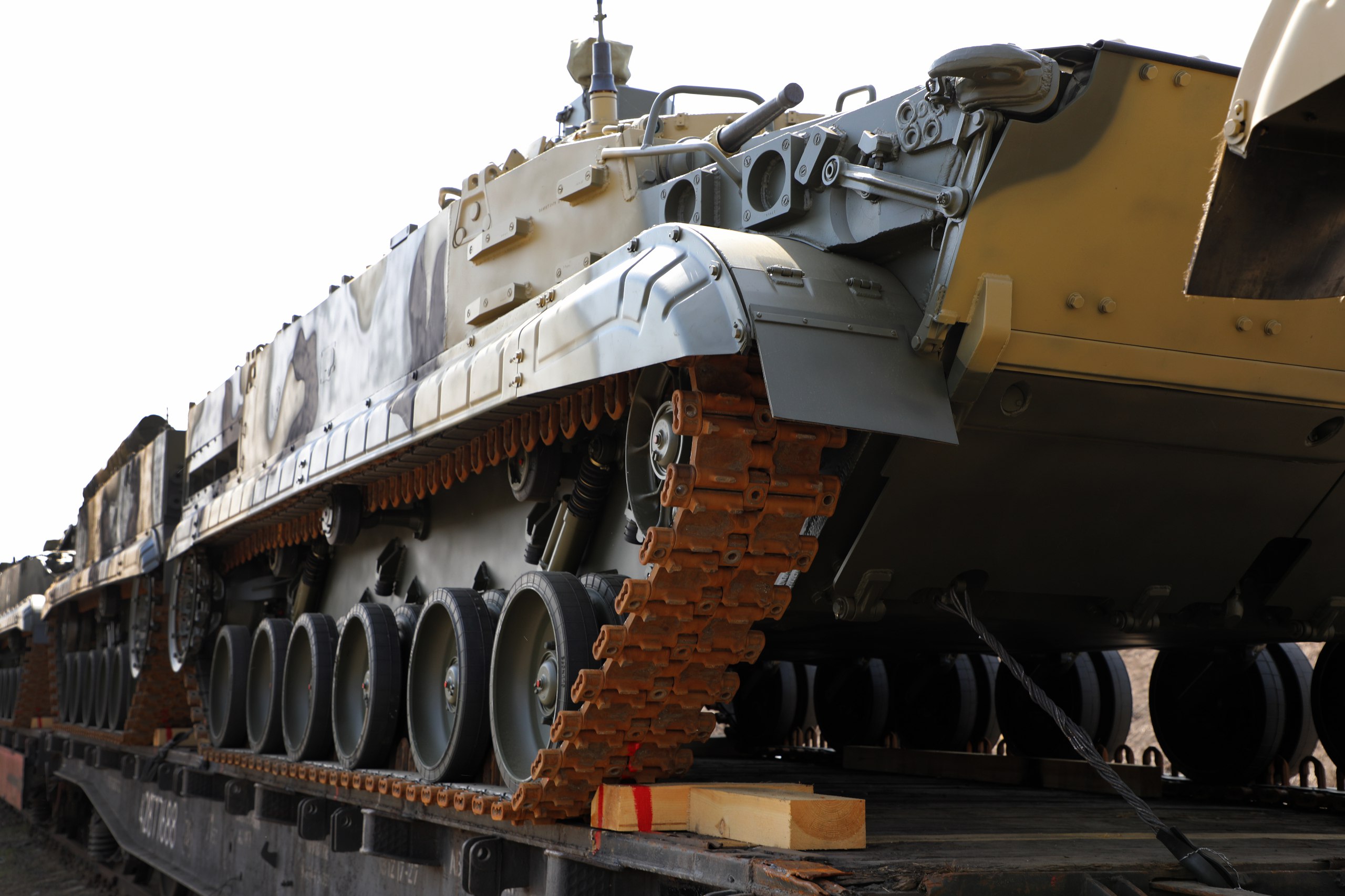
Military expert Pavel Luzin, in an interview with The Insider, noted that “delivered” is not equal to “produced” and, in addition, there are a number of aspects that indicate that the figures announced by the plant can hardly be called impressive.
“Part of the deliveries in the first quarter of 2023 were deliveries for 2022, this is, firstly. 2019 is far from the best year for Kurganmashzavod, when the plant had just entered Rostec against the background of a serious decrease in the volume of state defense orders for infantry fighting vehicles. The main emphasis in the current deliveries is on the repair / modernization of the BMP-2 and BMP-3, while before the war, the repair / modernization of this equipment was episodic, and basically the production of new BMP-3s was going on.
About the main events of the war on May 3 – in the previous report: “Drone strike on the Kremlin, Russia is shelling Kherson, new Iranian shells are in service with the Armed Forces of Ukraine. What is happening on the front line.


